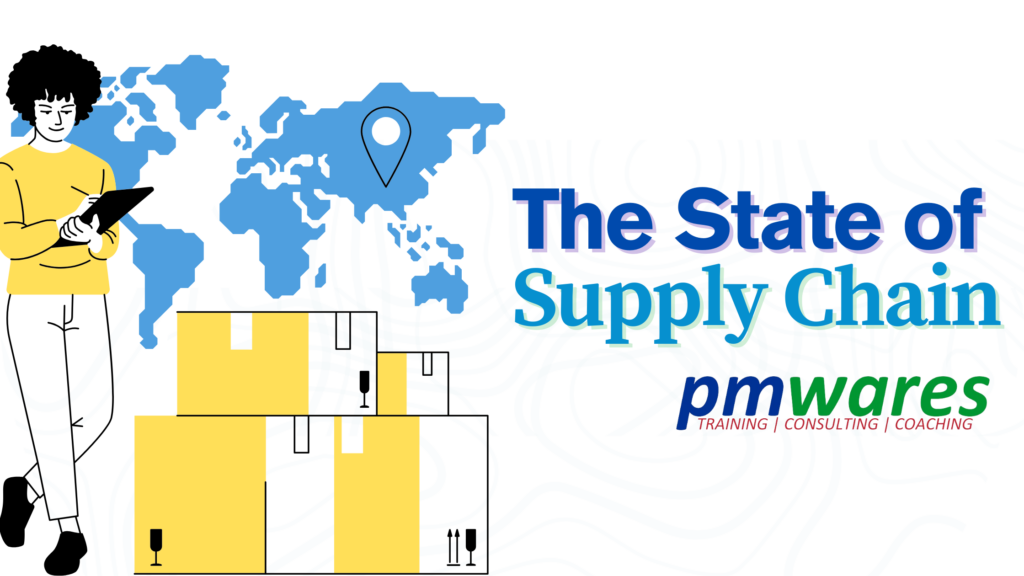State of Supply Chain Report 2025 by Anvyl – Summary and Key Insights

The 2025 State of Supply Chain Report, published by Anvyl, surveys over 200 consumer brands to understand the challenges and trends in supply chain management for the year ahead. The report highlights that the global supply chain landscape in 2025 is characterized by uncertainty with brands facing rising costs, supply shortages and transportation disruptions. These issues are further complicated by political headwinds, macroeconomic inflation and price-sensitive consumers. To remain competitive, brands need to prioritize closing the visibility gap with real-time data and operational efficiency to protect margins and diversify supplier networks to reduce risk exposure. Let’s look at some key insights from this report that further sheds light on this.
Key Insights:
- Only 21% of brands feel extremely confident in their ability to handle supply chain disruptions in 2025.
- 41% of brands are “somewhat confident” in their ability to handle supply chain disruptions.
- 38% of brands do not feel prepared for potential disruptions in 2025.
- Only 22% of brands have significantly increased their investment in supply chain technology.
- 43% of brands will continue to rely on manual processes and outdated systems, which slows down disruption response times.
- 67% of brands that feel most confident about facing disruptions use an ERP that offers a basic level of supply chain visibility.
- 66% of brands state that real-time visibility is a critical part of their disruption recovery strategy.
- 59% of brands find reliable and accurate visibility to be a challenge.
- Disruption recovery took less than one week for 57% of brands with high visibility in 2024.
- Only 12% of brands with low visibility could match that pace of disruption recovery in under one week.
- The top supply chain risks for 2025 are price increases due to proposed tariffs, supply shortages and rising transportation costs.
- The top three strategies brands are implementing to overcome supply chain threats are optimizing inventory management, strengthening supplier relationships and increasing supply chain visibility tools.
- Over-reliance on specific suppliers and regions was ranked as the 6th biggest supply chain risk.
- 55% of brands will focus on reducing procurement costs through streamlined supplier selection and negotiation processes.
- 66% of brands plan to reduce costs this year by diversifying their product sourcing strategy and optimizing transportation logistics.
- 34% of brands are making enhanced supplier diversity and resilience the No.1 priority of their 2025 risk mitigation strategy.
- When choosing new suppliers, 46% of brands prioritize quality standards.
- Reliability is a key selection criterion for 44% of brands when choosing new suppliers.
- On-time delivery is important to 42% of brands when selecting new suppliers.
- Cost competitiveness is a major concern for 40% of brands when choosing suppliers.
- Compliance is a significant factor for 34% of brands in supplier selection.
- Geolocation, transportation, and logistical considerations will significantly influence supplier selection for 78% of brands in 2025.
- The most pressing data challenges for retail brands are data inaccuracies and inconsistencies, data silos and lack of integration, and poor data quality.
- Brands rank supply chain visibility analytics and reporting applications as the No.1 opportunity for their business in 2025.
Conclusion
The report emphasizes that disruption is the new norm in supply chains, making resilience a critical focus for consumer brands in 2025. Brands that continue to rely on outdated methods and lack sufficient visibility risk being outpaced by competitors. Real-time data, robust reporting and advanced analytics are identified as crucial for responding effectively to disruptions. The report underscores that technology is no longer optional but a necessity for staying competitive and achieving cost efficiencies through strategies like supplier diversification and enhanced visibility.
You can download the full report by Anvyl here